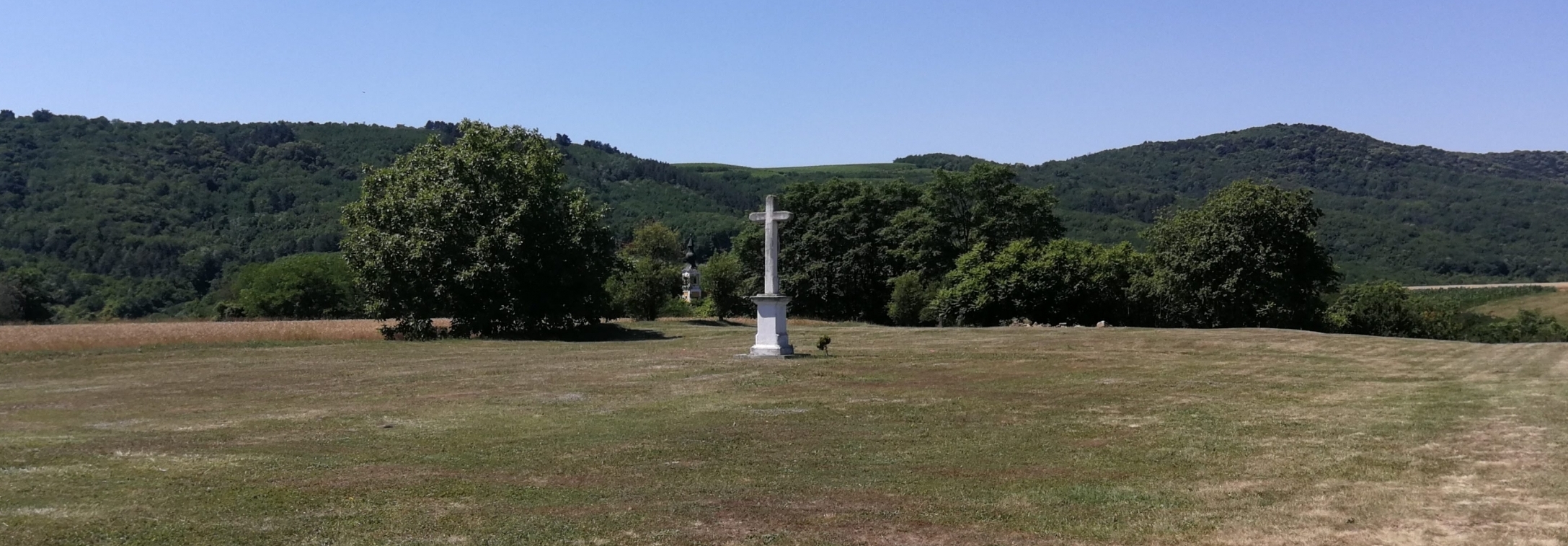


In southeastern Hungary, near the Croatian border, we stopped at Villánykövesd, one of the five villages that comprise the Villány wine region that stretches 25km to include the twelve settlements of Siklós. Hard as it is to imagine in a village with two streets, we got lost and ended up driving (very slowly) on tractor paths looking down on the village and where we should have been.

Photo by Steve Jacobs
As with many wrong turns, this one turned out to be quite fortuitous for there ahead we saw a small church-like building and a lone stone cross in a field. As we approached, the tiny cemetery revealed itself. Given that Villánykövesd is wine village, it was no surprise that the names of those resting on the hillside came from wine families. Bock. Weingart, Blum. Although from what I can figure out, János Blum’s father, currently running the Blum winery in the village. was József. And he’s the one who started the vineyard. Perhaps Adam was a great-grandfather?

The region was settled by Germans back in the 1700s. Given that the Nationalities Act of 1868 forbade the speaking of German and that jobs with the state were nigh on impossible to come by if people didn’t give up their German name and adopt a Hungarian one, it’s a credit that so many family names have survived. German settlers, who had previously eschewed any political groups, objected to the so-called Magyarization and the region saw a ‘reawakening of Germanness’. The January 1941 census showed a German population of 60% in Villány and 65% Villánykövesd. I wonder what life was like for them come 1944.

I think Miklós Bock is too old to be the father of József Bock, voted winemaker of the year in Hungary in 1997 but perhaps again, a grandfather? It’s hard to imagine with names like Blum and Bock that the connection isn’t there.



These metal crosses are not something I’ve seen before. Quite unusual. I can find little by way of information about the cemetery but apparently, an archaeological dig discovered something of interest:
The Villánykövesd primaeval settlement did not have larger connected cemeteries, but there was a small cemetery next to each house group, in which members of the large family community were buried. The skull-free burials found in the tomb groups were the graves of large family leaders. They also stand out from the rest with their wealth of artefacts. Here they found masterpiece pendant jewellery made of wild boar fangs, which were the badges of the great family leaders, indicating the origins of their owners and their leading role in society. Painted pots also came out of these tombs. One of the very valuable finds of the excavation in Villánykövesd is a tiny clay statue depicting a pregnant woman, so it is related to the cult of fertility.
A lovely little detour that resulted in a long but fascinating read of the history of the area.